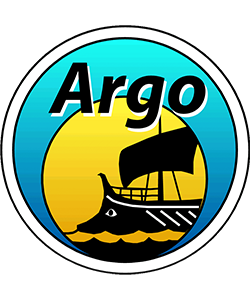Dear Argo colleagues,
As many of you are aware, we have been working to understand the details of a problem with the Druck pressure sensors used in SBE-41 and SBE-41CP CTDs on Argo floats. The name given to the problem is “Druck micro-leaks” because in 3 instances, in the last two years, we have identified that oil from the sealed inner sensor chamber is leaking out through micro-cracks in glass-to-metal seals that bring sensor signals out through the back of the sensor. The oil leak rate is very slow, just a few micro-litres per month. As oil leaks, a flexible titanium diaphragm, that transmits ocean pressure to the oil chamber, bends into the sensor chamber to make up for the oil loss. As oil leaks, the sensor develops a progressive negative offset in measured pressure, and this becomes evident in Argo data as a negative surface pressure. With enough oil loss the diaphragm deflects far enough to contact and short out the pressure sensing element. There is evidence that the diaphragm bottoms out and does not result in a further leak of oil or ocean water through the sensor.
In early March 2009 an expanded analysis of Argo surface pressures, done by Dana Swift of University of Washington, revealed an increase in the occurrence rate of floats exhibiting negative surface pressures from floats deployed in 2007 and later. The jump in occurrence rate is alarming, from low 3% of floats pre-2007 to about 12% of the floats analyzed from the 2007 deployment. With a recent analysis from Scripps, data from a total of 500 floats has been scrutinized. The best recent statistics are that floats deployed in 2008 are showing an even higher occurrence rate, greater than 10% and perhaps up to 30%. One caution is that it can take up to 500 days at 1000 dbars for an Argo float to exhibit a sufficient negative pressure offset to distinguish it from healthy sensors. Therefore, the occurrence rate for Druck microleaks in 2008 and early 2009 floats may take another year to establish.
Regardless of exact statistics, the pressure problem and its consequences are severe. At Sea-Bird, we have stopped shipping any CTDs for Argo floats until we can identify and use pressure sensors that will operate properly for float lifetimes.
We strongly recommend that float manufacturers stop shipping floats to customers, and return CTDs to Sea-Bird for evaluation and repair.
And we strongly recommend that the Argo community stop deploying floats, and consult with the float manufacturers about the logistics for getting CTDs returned and repaired.
The urgency to return floats and CTDs immediately for the repair work is not high, however, because we do not have an immediate stock of pressure sensors suitable for replacement. We are working on 3 solutions:
1) create a test procedure in the laboratory that can accelerate the microleak failure and consequently separate Druck sensors into the two distinct categories observed in Argo float data: the bad sensors (micro-leakers) and the good sensors that don’t drift at all for 5+ years. Despite very focused effort at Druck Ltd, in the UK and at Sea-Bird we have not been able to develop a reliable test yet. We are working on several test methods, and one test that could potentially be done by Argo scientists at their own facility, allowing the bad sensors to be identified and leaving good sensors and floats available to be deployed without further delay or a return to the US.
2) we have a stock of about 100 pressure transducers from Paine that could be used for programs that must deploy floats soon. The Sea-Bird SBE-41 and 41CP CTDs were equipped with Paine pressure sensors until early 2000. The Paine sensors exhibit a positive drift with time but less than +10 dbars over the life of a float. The sensors also exhibit a span change (slope in pressure calibration) that has a magnitude of about 10% of the offset drift.
3) finally, we have been working with a Swiss company, Kistler, to develop an alternative to the Druck sensor. Five years of effort and evaluation have produced a very promising sensor. That sensor is in the final stages of testing at Sea-Bird, but has passed all the design criteria in testing at Kistler and the first production batch of 100 sensors suitable for Argo floats is in the pipeline. That option should be available in one month.
A report with more details of the microleak problem, field units, lab testing, etc is being prepared. We are also developing the details of the warranty relief that Sea-Bird will offer for this situation. The Argo community can expect these two reports very soon.
While we are still in the initial phases of understanding the problem and the potential remedies, we welcome your questions and will do our best to answer them completely.
Sincerely,
Norge Larson, President Sea-Bird Electronics, Inc
